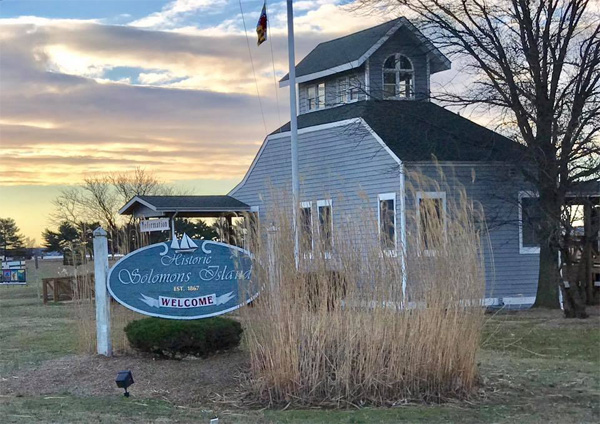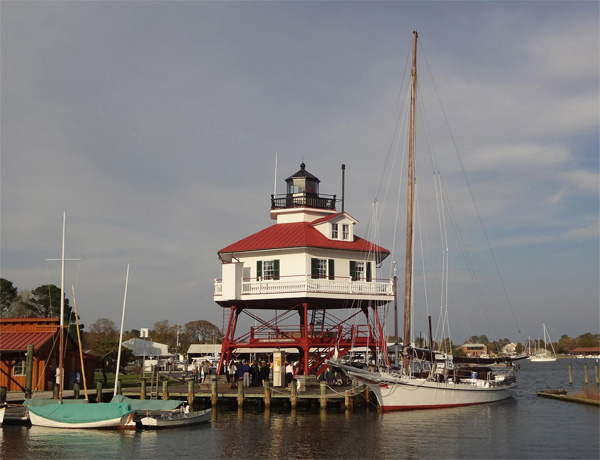Head to the southernmost tip of Calvert County on any given weekend, and you’ll see why Solomons Island is the place to be.
With a rich history that includes shipbuilding, oyster processing, and military training, Solomons has been reborn in recent decades as a popular weekend spot for Southern Marylanders and weekenders from Baltimore and Washington.
And it’s no wonder! The main road through the waterfront town is lined with restaurants and gift shops on one side and a boardwalk by shimmering waters on the other. Boats cruise around the island, which is situated where the mouth of the Patuxent River meets the Chesapeake Bay.
Solomons Island has undergone several name changes, starting as Bourne’s Island around 1680. It was also known as Somervell’s Island and Sandy Island before Baltimore businessman Isaac Solomon purchased the land in 1865. Shortly after the Civil War, he established the Solomons Island cannery, which included small lots of land on the island that he leased to residents. Solomons was officially recognized in 1870 when the U.S. Postal Service opened a Post Office there.

(Images via Solomons Business Association on Facebook)
It was after the Civil War that Solomons Island rose to prominence. The town became a center for oyster processing, and because of the number of boats needed for that industry, it also became a center of construction and repair of oystering vessels.
In the 19th century, busy shipyards supported the fishing and oystering fleet. Schooners and sloops were built here, and Solomons Island became famous for bugeyes, a type of sailboat developed for oyster dredging that was a precursor to the skipjack. More bugeyes were built here than anywhere else in the country.
Because of its isolated location – the first car didn’t appear in Solomons Island until 1910 – Solomons grew as a close-knit, self-sufficient community. War came to the town during the War of 1812. Nearby farms and settlements became targets as the British traveled up the Patuxent River to Washington. A flotilla sailed from Solomons to attach British vessels sailing on the Chesapeake Bay.
During World War II, the Allied command chose Solomons as the training site for its amphibious invasion forces. Lessons learned here proved to be invaluable on D-Day and at other important operations like Guadalcanal. More than 60,000 troops trained at Solomons Island during the war.
Solomons’ isolation ended completely in 1977 when the Gov. Thomas Johnson Bridge was built, connecting Calvert County to St. Mary’s County across the Patuxent River. And as the canneries and shipyards closed, a new chapter opened for Solomons Island: Tourist town.

Today, Solomons is known for its seafood restaurants and gift shops. Charter boats and fishing tours dot the waters, and annual events include Fourth of July fireworks, a Plein Air art festival, boat races, and holiday events. The town is home to the Calvert Marine Museum, which chronicles the natural and maritime history of the region; and Annmarie Sculpture Garden and Arts Center, an outdoor sculpture garden and arts center that is affiliated with the Smithsonian. The University of Maryland’s Chesapeake Biological Laboratory, the oldest state-supported marine lab on the East Coast, is also in Solomons.
Each year, the streets fill for the seasonal opening of the Tiki Bar, an island-themed bar whose April opening attracts about 10,000 people to Solomons.
What’s happening in Solomons? Visit the Solomons Business Association’s website and Facebook page for a calendar of events.





